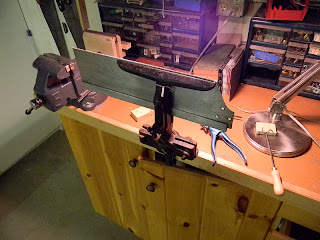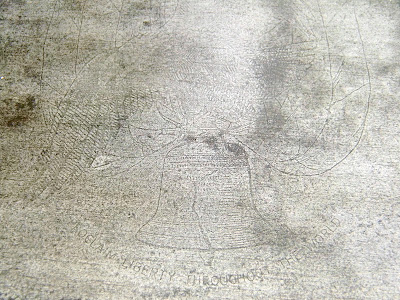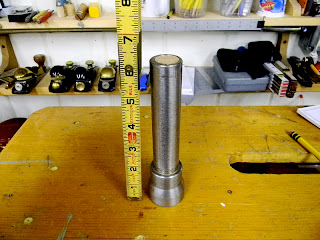A sharp tongue is the only edge tool that grows keener with constant use.
Washington Irving
When I was a kid we used go to my grandparents house all the time. My grandfather was a game warden and he also had a wood shop where he built furniture and puttered around. Two things I remember were his planer, loud and messy, and how he would sharpen his handsaws. I would watch him with a file and sometimes he would let me try. Over the years, I got pretty good at sharpening the saws, but then girls and life and school took over and I forgot about handsaws.
When I started woodworking on my own, I did what most do, I bought some Japanese saws and never really gave Western saws much thought. I did get two nice saws for gifts, a Lie-Nielsen dovetail and a Wenzloff carcass saw. Both work great, but honestly I never used them that much. When I did need a handsaw, I use the Japanese saws. They are sharp and seem to stay sharp forever, so why not.
Also like most woodworkers, I had a few handsaws laying, or rather, hanging around and this New Years I made two resolutions--wear my seat belt more, and sharpen the saws I had laying around. Who knows, maybe I would use them. I did recently break my dozuki saw, so why not.
Here you can see the results so far. I should say that I did have a leg up as I had sharpened saws before, but I wasn't really expecting the results I got in very short order. Five or six saws in and they are sticky sharp and they cut like a dream. More on that later and also the technique I use.
Above you can see a few pics of a cheap, well, beat up back saw. I picked it up a few years back at a garage sale for 5 bucks and set it on a shelf and forgot all about it. So I figured it would be a good candidate for my first crosscut sharpening in quite awhile. If you are gonna try hand, sharpen a ripsaw first. The only angle you worry about is rake, the others are 90º. Crosscuts are a lot harder as you have three angles to worry about if you want to do a good job.
So I got the right sized file and figured the angles and set about filing and....nothing. The file wouldn't even touch the steel. I couldn't even joint the teeth. The steel would just leave a silver streak on the file. I was at a loss, but as I had been reading Ron Hock's The Perfect Edge where he talks about tempering steel after heat treating. Best I could figure, some knucklehead in the past had heat treated the steel in the past to make it harder, and rendered the steel too hard.
So I figured I'd try tempering the blade and if it didn't work oh well, out 5 bucks. I read Hock's book about tempering and tried it in the oven, 500º for 20 minutes, then I let it cool with the oven door open and the next day, I tried filing it. This made all the difference. The file worked like it should, and I set about re-shaping the teeth and sharpening.
For the first filing, I like to take the handle off so I can re-finish it and also it allows me to clean up the blade. For this blade I had to file the wrecked teeth right off and start fresh, which actually takes less time than you would think. I stayed with the original setting of 12 tpi. I did find on the net a print out of lines that lets you sight different lines, that is to say sheets with 12 tpi, another sheet with 8 tpi etc.
Here are the lines. Just set it just behind the blade and file right on the line. I do a light scoring all the way down the blade so that when I get filing I can keep a rhythm going. Just file until you see a small flat on the top of each tooth. I will go more into my method of filing in a later post but I will say keep the flats as long as you can. Another thing I do is shut off the overhead lights and have only a swing lamp shining behind across the flats. This is critical.

Like I said, I will go into greater detail later, but the way I file a blade that is in pretty bad shape, one with misshapen teeth and different heights, is I sharpen right to left, heel to toe (handle to tip) first filing. Leave the flats, all you want to do is reduce then by half. I should have said that you must first joint the tops of the teeth to bring them all even, this is what gives you that flats. So anyway, joint and sharpen from right to left, heel to toe, cutting the flats in half. Then flip the saw around and file back the other way, left to right, still heel to toe, this time filing to shiny flats right off.
When you get to the end, turn the saw back around, and re-joint it lightly, very lightly. I then set the teeth, and joint again once. Now with the heel at your right, file lightly, to the toe, flip around and do the last filing, left to right, again heel to toe. This last one should take off the last glimpse of shiny flats and leave a saw that is sticky sharp.
These are the dovetails I cut with this saw, not bad for a big panel saw. Usually dovetails should be sharpened as a rip, or a modified rip, but this crosscut did ok.
Below you see a beautiful Atkins Panel Saw. I like Disston, but Atkins' handles are a lot nicer. The steel is great and the blade is straight. I sharpened it as a crosscut, 20º rake, 25º fleam and about 10º slope. Slope isn't necessary but it does allow more sawdust clearance. I would sell this one if anyone is interested. Just let me know via comment or email.





















































